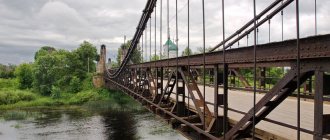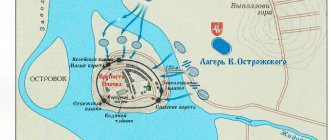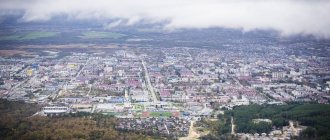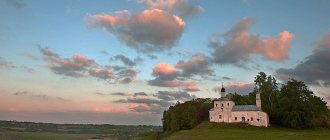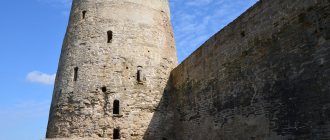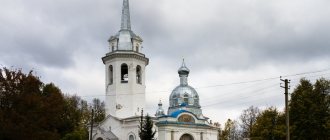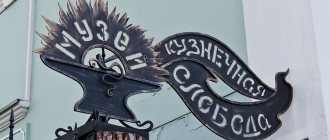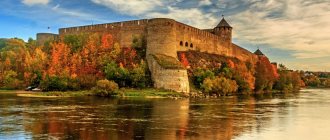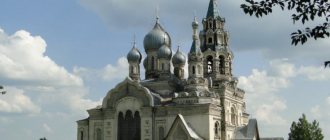To tell the truth, I dreamed of going to Pskov for a long time. It is shameful for a medievalist historian, especially one who specialized in Western Europe, to travel around the entire Golden Ring and not visit the north-west of Russia - a region that was once more closely connected with the Hansa than others, fought and traded with the crusading knights more than once resisted foreign invasions with varying degrees of success.
I drove around the Pskov region in the updated Hyundai Solaris, which has changed significantly compared to the first generation. Local roads are not very conducive to a sedan - it is better to force such potholes on a frame SUV, but my 1.6-liter friend managed.
The route from St. Petersburg to Pskov passes through a bunch of settlements, there are constantly cameras here, and the maximum speed along the entire length is limited to 80 kilometers per hour, which is difficult to get used to after 110 in the Moscow region on good roads. On the other hand, the leisurely pace allows you to look around and even note the nests of storks on roofs and pillars - a sight that is completely unusual for the Moscow region, with the exception of perhaps the western part.
Stronghold of the Republic
We arrived in Pskov already at dusk and only had time to briefly examine the Kremlin. It is clear that a cold winter evening is not conducive to walking, but the thick walls of the fortress, recreated by archaeologists after excavations, make a strong impression. The first settlements on the site of the Pskov Kremlin (or Krom, as the Pskovites called it) appeared, judging by the results of excavations, somewhere in the 6th century AD. Five centuries later there was already a fortress there, and in the 14th century Krom became the heart of the Pskov Republic - one of the three Russian veche republics, along with Novgorod and Vyatka.
For this alone, it is worth going to Pskov - to touch the ancient history of the lands that remained part of the all-Russian space, but went their own way during the years of feudal fragmentation. It is clear that sooner or later the Pskov Republic, like others, would have to abandon its former pride and bow its head to the winner in the inter-princely struggle for supremacy - which is what happened in 1510. After this, Pskov became part of a single Russian state, becoming one of the key points of defense of the northwestern lands.
The troops of Stefan Batory crashed against the walls of Pskov: the Pskovites and the garrison withstood a six-month siege and more than 30 assaults, forcing the Polish-Lithuanian king to eventually negotiate with Ivan the Terrible. In 1615, three years after the end of the Time of Troubles, the city repelled an attack by the Swedish troops of Gustavus Adolphus. Almost a hundred years later, in the winter of 1701, the troops of Peter I, defeated near Narva, retreated to Pskov. It was in Pskov that the future emperor gathered a new army, awaiting the onset of the formidable troops of Charles XII. After the reconquest of the Baltic states, the city fell into a long lethargic sleep until 1917, when it was awakened by the shots of German guns.
Pskov Kremlin
Photo: Alexey Danichev / RIA Novosti
The entire centuries-old history of Pskov is in its architecture, in numerous white-stone chambers, in monasteries (in one of them, Spaso-Preobrazhensky Mirozhsky Men's Monastery, frescoes of the pre-Mongol period have been preserved). There is such a common cliche - “the stones of the city breathe history.” To hear the breathing of Pskov, you must definitely go to the ancient Trinity Cathedral - the heart of the Pskov Kremlin. Even though the temple was rebuilt several times, it is worth visiting there: for the huge, ceiling-length wooden gilded iconostasis and the tomb of the holy Prince Dovmont - a Litvin by origin, who fled to Pskov and faithfully served his new home, more than once defending the borders of the Pskov land with his sword.
Pskov is a small regional center and at the same time a huge open-air museum with hundreds of historical monuments. It would be nice to come there for at least a week in the summer to wander around the city, stand on ancient stones, and breathe in the history dissolved in the air. And be sure to try the famous Pskov smelt - a local fish delicacy.
Sights of Pskov and the Pskov region that are worth visiting
Pskovsky Krom
Pskov Krom The Kremlin of the city of Pskov is more often called Krom.
It is located on a cape at the confluence of the Velikaya and Pskova rivers. The territory of Krom covers an area of 3 hectares. The white-stone fortress consists of powerful walls up to 8 m high and up to 6 m thick and towers reaching 35 m in height. The first settlements on the cape, where Krom is located today, appeared in the middle of the 1st millennium AD. e. Earthen fortifications began to be erected around the 10th century. Today the Kremlin is part of the museum-reserve and is considered the historical heart of the city. In addition to the fortifications themselves, its ensemble includes the ancient Dovmont city, the Trinity Cathedral with a bell tower, Zahab (fortification structure), the Order Chambers and other buildings from different eras.
Rattling Tower
Rattles Tower
It is impossible to see all the sights of Pskov in one day, but tourists should definitely visit its famous towers. The most impressive one is called Gremyachaya. It was built in the 16th century. on the bank of the Pskova River. The structure is more reminiscent of European medieval fortresses, and for good reason: according to researchers, the tower could have been built by the Italian architect Ivan Fryazin, who was invited to work in Russia.
The purpose of the Gremyachaya Tower was military. This can be guessed from its height and the thickness of the walls, cut through with loopholes. Inside the structure there was a secret underground passage through which one could get to the river - a source of fresh water in the event of a siege. When visiting a tourist site along with an excursion, you can hear many local legends about ghosts and beautiful maidens imprisoned in the tower.
Pokrovskaya Tower
Pokrovskaya Tower
The Pokrovskaya Tower is no less interesting for tourists. It is not only the largest in Pskov, but also one of the largest in Europe. It was built in the XV-XVI centuries. and was restored several times. The tower has five tiers, its height is 52 m, and its circumference is 90 m. It is included in the Pokrovsky complex of the city, which explains its name.
The tower was of great military importance. During the Livonian War, it was subjected to a six-month siege by the troops of the Polish king Stefan Batory. The invaders managed to take the tower, but were then knocked out, causing them great damage. In 1995, a severe fire occurred in the tower, depriving it of its wooden tent. For several years it stood “beheaded,” but in 2010 a restoration took place, returning it to its historical appearance.
Dovmontov city
Dovmontov city
in the 13th century. For additional protection of the Pskov Kremlin, a fortification structure was built - Dovmontov City. The name was given to it in honor of the Pskov prince Dovmont. Two centuries later, the Vlasevskaya and Rybnitskaya towers were built there, which are still part of Krom today.
But Dovmontov city could be proud of not only its fortifications. There was a whole collection of churches here: according to the chronicles, in the 16th century. There were as many as 17 temples on the territory, built very crowded. Later, many of them were demolished, and during the Northern War, some housed weapons depots. Today, the foundations of the temples have been preserved and restoration is underway.
Izborsk fortress
Izborsk Fortress
The Pskov land is exceptionally rich in fortresses, which is not surprising, given the location of the city on the western borders of the state: it was necessary to provide good protection from foreign invaders. One of the most interesting fortresses is located in the city of Izborsk, Pskov region. It is located 30 km from the regional capital and can be reached by car or public transport.
The fortification is located on Mount Zheravya and dates back to the 14th century. The history of the fortress is very rich. Built to protect the western borders, it was attacked many times by the knights of the Livonian Order, as well as by the Lithuanians during the Time of Troubles. After the Northern War, the fortress lost its strategic importance and fell into disrepair. It has survived well to this day, but needs additional restoration.
The fortress ensemble includes seven towers, its walls are 3 m thick. The territory of the Izborsk fortress occupies 2.5 hectares. There are guns mounted on the walls. On the territory of the fortress there is St. Nicholas Cathedral, completely restored.
Gdov Fortress
Ruins of the Gdov fortress
Gdov is the northernmost city in the region, located 118 km from Pskov. Here, too, an ancient fortress has been preserved, which met many enemy attacks. It was founded at the beginning of the 14th century. The first fortress was made of wood, and it was protected by earthen ramparts. However, attacks by the Teutonic knights forced the princes to build a fortress of stone. The mighty walls of the new fortress reached 5 m in thickness. The approaches to it were protected by rivers and a wide ditch with water.
Unfortunately, today only picturesque ruins remain of the monumental walls. Some of the fortifications were demolished by the Swedes during the Time of Troubles, another part was dismantled by the residents of Gdov for construction needs, and the wars of the 20th century did not spare the ancient fortress. But even today, tourists will be interested in admiring the surviving fragments of walls and earthen fortifications and inspecting the temple of Dmitry of Thessaloniki restored on the territory.
Velikolukskaya Fortress
Velikiye Luki Fortress
The city of Velikiye Luki is located on the road to Pskov from Moscow. Its main attraction is the ancient fortress, founded in the 12th century. Due to the advantageous strategic location of this area, many rulers and military leaders sought to seize the territory and build their fortifications on it. The Velikolukskaya fortress reached its peak during the Northern War. The last time she played her role was during the Great Patriotic War. The fortifications were destroyed and were never restored.
Since 2014, as part of preserving the cultural heritage of the fortress, the previous layout was returned. Gates were made right in the earthen ramparts, and paved paths were laid. There are several WWII monuments on the territory. Since 2021, the fortress has become the venue for festivals of historical reconstructions.
Porkhov Fortress
Porkhov Fortress
The first fortifications in the small town of Porkhov began to be built by order of Alexander Nevsky. With the increase in attacks from the west, it was decided to build a full-fledged fortress, which was carried out at the end of the 14th century. The Porkhov fortress withstood many sieges, but subsequently lost its military significance and was abandoned.
Today, tourists can independently explore the impressive ruins of the once mighty fortifications. Several towers and walls have survived. You can walk along some of their sections, admiring the views of the surrounding areas through the loopholes. One of the attractions of the fortress is St. Nicholas Church. It is operational, and its bell tower is located directly above the Nikolskaya tower of the fortress. There are also several museums on the territory that introduce the history of the city.
Pogankin chambers
Pogankin Chambers
Despite the not-so-sounding name, this building in Pskov is a real monument of Russian architecture. It was built by order of a merchant named Pogankin. The customer wanted the building to house not only residential premises, but also utility ones, including warehouses and workshops. Today, in the building of the Pogankin Chambers there is a museum-reserve, which also includes several branches.
The chambers are shaped like the letter “P” in plan and will include three buildings. The snow-white walls are made of limestone. The design of the building is very simple and restrained, there is practically no decor. There are a total of 105 windows cut into the walls, located at different levels. Inside there are exhibitions of Pskov icon painting, collections of Russian silver and archaeological finds.
Menshikov Chambers
Menshikov Chambers
The architectural monument was built, it is believed, by the noble merchant Menshikov. The first chambers were a three-story white stone building, inside of which there were living quarters. Later, the merchant's heirs built the second and third chambers, the decoration of which was also typical for a merchant house of the 17th-18th centuries. Interestingly, all the buildings were connected by underground passages.
In the 18th century A severe fire occurred in Pskov, in which the Menshikovs’ chambers were also damaged. The merchant's descendants sold them and no longer lived in them. However, the monument was later restored. Today, the chambers house souvenir and flower shops, a small museum and an exhibition of works by contemporary artists.
Trinity Cathedral
Holy Trinity Cathedral
The main monument of church architecture in Pskov is located on the territory of Pskov Krom. This is the only large city temple that has survived to this day. The white stone building rises above the treetops, standing out against the sky. On a high quadrangle rest five onion-shaped domes - four black and a central gilded one.
The Holy Trinity Cathedral dates back to ancient times. The first temple on the territory of Krom was built back in the 10th century. by order of Princess Olga. It was in it that Prince Alexander Nevsky prayed before the decisive battle with the German knights on Lake Peipus. But the building that tourists in Pskov admire today was built in 1699. In the crypt of the temple lie the remains of the famous Pskov princes, and in the prayer hall there is a wonderful iconostasis.
Temple of Alexander Nevsky
Temple of Alexander Nevsky
A beautiful red brick temple was built in 1907 in the shortest possible time. After the revolution it was abolished, and a theater operated in the building, later the House of Officers. The temple was returned to the fold of the Russian Orthodox Church in 1992.
The temple is considered a military temple and helps military personnel, their relatives and veterans. In style it is close to Russian eclecticism. Above the red walls are green roofs and a blue dome with a golden cross. On the other side rises a tented bell tower. Inside you can admire the iconostasis and a rich collection of images. There is also a church museum and library in the temple.
Church of Varlaam Khutynsky
Church of Varlaam Khutynsky on Zvanitsa
The foundation of this temple is associated with sad events. In the middle of the 15th century. A plague epidemic broke out in Pskov. To ward off the pestilence, people built a temporary wooden church and consecrated it in the name of Varlaam Khutynsky. Later, the temporary temple was replaced by a permanent one made of stone. Under the Bolsheviks, many priests were exiled to camps, and a warehouse operated inside the building.
Today the temple has been returned to the Orthodox Church and is in satisfactory condition. The white stone building is topped with silver domes and has a small belfry. Inside, visitors can see a valuable 18th-century iconostasis. and a miraculous icon.
Church of the Assumption of the Virgin Mary
Church of the Assumption of the Mother of God
The elegant church is painted pale blue. It was built at the beginning of the 19th century in the classical style. Funds for the construction were allocated by a local landowner, who was a relative of one of the rebel Decembrists, Mikhail Nazimov. They say that, having returned from Siberia, he regularly visited him and ordered a prayer service for the repose of the souls of the Decembrists. Therefore, the temple is sometimes called Nazimovsky.
Under Soviet rule, the archive of the Pskov region, a cultural department and a theater operated in the temple. After the collapse of the USSR it was returned to believers. The entrance is designed in the form of a portico with a pediment and four columns. The interior decoration has not been preserved. Next to the temple rises a neat three-tier bell tower in the same style.
Mirozhsky Monastery
Spaso-Preobrazhensky Mirozhsky Monastery
The monastery is located at the confluence of the Mirozh and Velikaya rivers and is recognized as a monument of republican significance. This is one of the oldest monasteries in the North-West: it was founded in 1156. It served as an important cultural center and had its own library. Copyists of chronicles and books worked within the walls of the monastery, and an icon-painting workshop operated.
Several times the monastery fell into the hands of invaders, and due to its location on a river spit it suffered from flooding many times, the last time in 2011. The modern ensemble includes the Transfiguration Cathedral, Stephen's Church, several buildings and cells, a bathhouse and a long monastery fence. The main value of the monastery is its rich collection of frescoes from the pre-Mongol period, the only ones that have survived in satisfactory condition to this day.
Pskov-Pechersky Monastery
Holy Dormition Pskov-Pechersky Monastery
The small but very picturesque town of Pechory is located in the north-west of the Pskov region. Its pearl is the beautiful Pskov-Pechersky Monastery, which dates back to 1473. True, then it was not a monastery, but only a small cave church, consecrated in honor of the Dormition of the Virgin Mary.
In the 16th century The monastery began to develop rapidly: new churches were built, pottery and icon-painting workshops were opened. The abbot of the monastery, Cornelius, who contributed to the prosperity of the monastery, was executed by Ivan the Terrible on suspicion of treason and declared a holy martyr.
Today, the monastery complex includes many churches (Uspenskaya, Sretenskaya, Pokrovskaya, etc.), St. Michael's Cathedral, a beautiful stone belfry, sacristy and other buildings. There are two springs with holy water. The territory of the monastery is surrounded by fortress walls built during the Livonian War.
Svyatogorsk Monastery
Holy Dormition Svyatogorsk Monastery
The holy monastery is located in the Pushkin Mountains and is very famous. It was founded by Ivan the Terrible. For a long time the monastery was one of the outposts, but after the Northern War it lost its military significance. Over time, a settlement grew around the monastery, and later - a full-fledged village, known today as Pushkin Mountains.
The monastery is closely connected with the name of the poet Pushkin. While working on Boris Godunov, he repeatedly visited the monastery archives to collect data. Here, in the tomb of the Hannibals-Pushkins, is the poet’s grave. During the Second World War, the monastery suffered severe damage, but was restored. Afterwards, a museum-reserve named after them was opened in it. Pushkin. The main temple of the monastery is the Assumption Cathedral, and the most revered shrine is the icon of the Mother of God Hodegetria.
Malsky Monastery
Malsky Spaso-Nativity Monastery
The monastery is located in the village of Maly, near the city of Izborsk. The founder of the monastery is considered to be the Monk Onufriy. When he came to these lands, there were dense dense forests everywhere. However, Onuphry nevertheless founded a monastery, which gradually grew into a full-fledged monastery. The monk died at the end of the 15th century. In the next century, the monastery was destroyed by the Poles, all the brothers died. The monastery was abandoned for a whole century. It was finally abolished under Catherine II.
Today the Malsky Monastery has been transferred to the Pskov-Pechersky Monastery and is considered its monastery. The buildings have been partially restored. Many pilgrims come here to collect holy water from the springs. The architectural ensemble is located in a very picturesque and quiet area, surrounded by forests and meadows.
Arboretum
Arboretum Mirozhsky Park
Pskov Arboretum is located near the Mirozhsky Monastery. It was planted by Pskov residents in the 1960s, but over time fell into disrepair. In 2013, botanists from Russia and the Baltic states restored it, turning it into a city landmark that is eagerly visited by citizens and tourists.
The park has a lot of greenery, alleys, benches and lanterns, and lawns. An artificial island has been created in the pond - a nesting place for wild ducks. The flora includes both local plants and rare specimens for the region. In 2021, a light and music fountain was opened.
Kuopio Park
Kuopio Park
Another great place for outdoor recreation, beautiful in winter and summer, is the Finnish Kuopio Park. It is located on the banks of the Pskova River. The park was created in the 1990s, and received its name in honor of the Finnish city - Pskov's sister city. Therefore, Pskov residents often call it Finnish.
On the opposite bank of the river there is the Gremyachaya Tower, which offers an excellent view, and the Cosmodamian Church. In 2015, the park was reconstructed, with new plantings of coniferous plants, numerous pedestrian paths, and a children's playground. People can ski, skate, rollerblade and bike in the park. Ducks also live here and are fed by tourists.
Truvorovo settlement
Truvorovo fortification
Near Izborsk there is an important archaeological monument of the Pskov region - Truvorovo fortification. It was here that the first Izborsk fortress was built - later it was moved to the place where it is now, at a distance of 1 km from the ancient settlement. The location for the first fortress was chosen well: the site is located on a hill and provides an excellent overview of the area. Sections of the ditch and earthen rampart have survived to this day.
The name of the settlement was given in honor of the legendary Truvor, the brother of Rurik. It is believed that he was one of the first Russian princes and ruled in Izborsk. Ancient burials have been preserved on the territory of the settlement. Two slabs with mysterious symbols inscribed on them deserve special attention. On one slab there is a massive stone cross 2.3 m high. If you believe the legend, then this is where the burial of Prince Truvor is located. Over the years, the cross began to lean heavily to one side, and in 2011 it was restored by St. Petersburg craftsmen.
In the south-eastern part of the settlement there is a church consecrated in the name of St. Nicholas the Wonderworker. The small white building is crowned with a small dome, which has an outline atypical for Orthodox churches. In the other part there is a neat belfry.
Mason's House
Mason's House
It's worth making a reservation right away: this architectural monument has nothing to do with the secret society of Masons. The name is given in honor of Ludwig Mason, who moved to Russia from Scotland at the beginning of the 20th century. Here he worked as a history teacher and was fond of collecting. And only later the Pskovites changed the surname in a more convenient way for them. In ancient documents, the spelling of the surname with a double “S” is also found: Masson.
A beautiful house was built by a Mason for himself and his family. Later the building was nationalized and communal apartments were located in it. Nowadays, it has been restored, and it operates as a museum-reserve. Tourists as part of an excursion group can examine ancient weapons, medals and orders, collections of jewelry, coins and toys.
Blacksmith's yard
Pskov Blacksmith's Yard (House of Ksendza)
Blacksmithing has long been the pride of the Pskov people. The modern Pskov blacksmith's yard was opened in 2008. It is located in a two-story building - former noble chambers, built at the end of the 17th century. In the 19th century the building was occupied by a priest - a Polish priest, and next to it stood a Catholic church, now lost. Not far from the blacksmith's yard there used to be a blacksmith's settlement, where the best Pskov craftsmen worked.
The museum consists of two forges. The first one works as an exhibition: here you can look at the ancient tools used by blacksmiths. And in the second, tourists can join this ancient profession and make a product, which they can then take as a souvenir.
The Smithy Yard is very popular in Pskov: it is often visited by people of creative professions, and entertainment events take place on its territory. In addition, craftsmen from the blacksmith's yard participate in the restoration of churches, restoring forged elements of decoration for them.
Museum "Two Captains"
Museum “Two Captains”
Veniamin Kaverin, author of the famous work “Two Captains”, was born in Pskov. Today, in honor of his novel, there is a museum of one book in the city. It was founded in 2002 and is located in the youth library building.
The collections tell about the life of the writer, his family and creative path, about the novel “Two Captains” and about the history of the development of the Far North. The collection includes such interesting exhibits as a whale vertebra and a fragment of a mammoth tusk. Manuscripts of the work and its editions in different languages are also presented. A separate part of the exhibition introduces the prototypes of the novel’s heroes, their destinies and the historical context of the events described by Kaverin.
Pskov Railway Museum
Museum of the History of Pskov Railway Workers
The Pskov Railway Museum was founded in 1967. Its founder, WWII veteran A. Valentik, studied and systematized archival materials related to the history of the railway in the Pskov region and its significance.
The museum includes three exhibition halls. The first talks about railway transport in general terms and the beginning of the construction of railways in the Pskov region. The second part of the exhibition is dedicated to revolutions in Russia and the Soviet period. The third hall introduces tourists to the history and importance of railways during the Great Patriotic War. Trains not only transported soldiers, wounded, military equipment and supplies, but also played a role in the post-war reconstruction of the country.
Museum "Honey Farm"
Museum "Honey Farm"
The museum is located 40 km from the regional capital, in the Pechora district. It is dedicated to beekeeping and peasant life at the beginning of the last century. The apiary is located in a picturesque rural area surrounded by forests. The museum was founded in 2002 by Pskov beekeeper Gennady Glazov.
The exhibition features over 10 thousand exhibits: tools, household items, lanterns, irons, samovars, machine tools, spinning wheels and other antique curiosities. The excursion seems to take you back in time and helps you get in touch with the original Russian culture. There is a tasting program for tourists: treats include fresh honey, tea mixtures, cheese, dried fruits and mead. Holidays are held here and books by the museum founder dedicated to beekeeping are sold.
Pushkin Museum-Reserve "Mikhailovskoye"
Pushkin Museum-Reserve “Mikhailovskoye”
In the village of Pushkinskiye Gory there is one of the most iconic places in the Pskov region. A special atmosphere of antiquity, unhurriedness and serenity reigns here, and it is complemented by wonderful nature. It is not surprising that these places became the field on which the seeds of great poetic inspiration sprouted.
Since the middle of the 18th century, the Mikhailovskoye estate belonged to the Hannibal-Pushkin family. Already in 1922, it became part of the museum-reserve named after the poet. Pushkin visited and lived here more than once, worked, and visited neighbors. In total, at Mikhailovsky he created about a hundred works, including the poems “Gypsies” and “Boris Godunov”.
As a museum, the Mikhailovskoye estate includes several objects: an old manor house where Pushkin stayed, his nanny’s house, a beautiful orchard with the famous Kern Alley.
Mussorgsky Estate Museum
Memorial Museum-Estate of M.P. Mussorgsky
The estates of not only Pushkin, but also other famous figures of science and art can be found in the Pskov region. For example, in the village of Naumovo there is a manorial estate that belonged to the grandfather of the famous Russian composer Modest Mussorgsky. He himself was born not far from Naumovo, but regularly visited his mother’s parental home.
Under the Bolsheviks, a school was opened in the estate, and in the 1970s. The first exhibition dedicated to Mussorgsky took place - however, not in the estate itself, but in an outbuilding. However, today it is located in the main building, which remains in good condition. The exhibition is dedicated to the life and work of the composer. The museum often hosts music festivals, performances, folk games and master classes. Particularly noisy festivities take place on New Year's holidays and Maslenitsa.
Museum-Estate of Rimsky-Korsakov
Memorial Museum-Reserve N.A.
Rimsky-Korsakov (Vechash Estate) Russian composer Nikolai Rimsky-Korsakov was also one of the famous personalities who lived in the Pskov region. Today, his memorial museum operates in the village of Lyubensk, Plyussky district. It consists of two estates, which the composer regularly rented as a dacha with his family.
Rimsky-Korsakov composed his works in the Lyubensk estate; here you can see the furnishings of that time and the musician’s personal belongings. He also created under inspiration from the beautiful nature in the second estate - Vechash. The composer spent the last years of his life in the Lyubenskaya estate, and died here. During the war, the Nazis destroyed the ancient house and the garden surrounding it, but later the ancient building was recreated.
Museum-Estate of Sofia Kovalevskaya
Memorial Museum-Estate named after.
S.V. Kovalevskaya Almost everyone has heard the name of Sofia Kovalevskaya: this woman was one of the most outstanding scientists in Russian history. Her museum-estate is located in the Velikoluksky district, in the village of Polibino. Sophia’s maiden name is Korvin-Krukovskaya, which is why the estate is officially called by this name. The woman mathematician herself lived here until she came of age.
The manor house is quite large and designed in a laconic style. In front of the building is a bust of Kovalevskaya. The museum's exhibition includes her personal belongings and exhibits related to her activities. The other part of the exhibition focuses on the past of the estate and the provincial life of the nobility. There is a small park around the building.
Vinogradov House-Museum
House-Museum of Academician I.M.
Vinogradov Another famous Russian mathematician Vinogradov was born in the village of Mirolyub, Velikoluksky district. His memorial house-museum is located in his parents' estate, the main house of which is an example of pre-revolutionary urban architecture.
The museum was opened in 1986, after Vinogradov’s death. But during his lifetime, he began to restore the estate and collect museum exhibits. The personal belongings transferred to him form part of it. The collection includes his scientific works, gifts and awards, as well as literature. Viewing the collections provides an opportunity to get acquainted with the life of a scientist, his hobbies and achievements. There is a garden park around it, in which a bust of Vinogradov is installed.
Olginskaya chapel and observation deck
Olga Chapel
There is such an episode in the life of Princess Olga. Standing one day on the bank of the river, she saw a bright ray of sun breaking through the gloomy clouds. This became a sign for her, and she ordered the construction of a cathedral on the opposite bank - in the place to which the beam pointed. This incident is considered the moment of the founding of the city of Pskov. At the place where, according to legend, the vision appeared to her, a small chapel was equipped with a beautiful view of the Trinity Cathedral and the walls of the Pskov Krom on the other side of the river.
In 1960, the Olga Chapel was demolished. The restoration of the monument began in our century. A small artificial embankment was built near the embankment. The chapel is made of white stone, crowned with a dark helmet-shaped dome and designed in the style of ancient Russian architecture.
Planetarium
Pskov Planetarium
The Pskov Planetarium is interesting because here the world of science and the world of spiritual culture are fused together. The attraction is located in the building of the former Church of the Nativity of the Virgin. The temple was erected in 1833. In the 1970s. The church underwent a major restoration and today it has become a temple of science.
Visiting the planetarium is a real adventure for children. Here you can touch the wonders and mysteries of space, get to know in detail the structure of the solar system and the Universe. A projection of the starry sky is displayed on the dome of the church. The information is presented in an accessible playful form, so that young visitors will not get bored.
Monument to Princess Olga
Monument to Princess Olga
The name of Princess Olga has special meaning for the people of Pskov, since she is considered its founder. Therefore, a monument was erected to her in the city, dedicated to an important date - the 1100th anniversary of the first mention of Pskov in Russian chronicles.
The monument is installed on a pedestal made of white stone, on which figures of saints are depicted. The princess herself is cast from bronze, she holds a cross in her hands, and a halo surrounds her head. Next to her stands a little boy, who, according to the sculptor’s idea, embodies Prince Vladimir, the future baptist of Rus' and also Olga’s grandson.
Monument "Battle on the Ice"
Monument in memory of the Battle of the Ice
This monument is dedicated to an important event in Russian history - the Battle of the Ice, also known as the Battle of Lake Peipsi. In this battle, Prince Alexander Nevsky and his squad crushed the Teutonic knights thanks to their courage and ingenuity.
The monument is located outside the city on Mount Sokolikha: the princely squad passed through these places on the way to the battle site. The monument is a sculptural group on a pedestal. Prince Alexander Nevsky, in full battle dress, sits on a horse in front of his warriors. But besides the warriors, there is also a boyar, a peasant and a craftsman: representatives of those segments of the population who also contributed to the victory. The total height of the monument is more than 30 m, it can be seen at a distance of 4 km.
Island Chain Bridges
Chain bridges
The small town of Ostrov is proud of an unusual structure - chain bridges, built a century and a half ago. The crossings were made across the troubled Velikaya River. The branches of the river flow around the island that gave the town its name. The bridges were built in connection with the opening of the road between St. Petersburg and Dinaburg. However, the initial project was unsuccessful: a flood began on Velikaya, which carried away all the workpieces and building materials. The mistakes were taken into account, and soon two chain bridges appeared on the Island.
The length of each is 93.2 m, the height of the granite pylons is 9.8 m. The chains are fixed in special boxes on the shore. Design features allow bridges to withstand all unexpected river behavior. Now the bridges are pedestrian; passenger cars are allowed to pass in exceptional cases.
Lake Peipsi
Pskov-Chudskoe Lake
The legendary lake became the site of one of the most important battles in Russian history - the Battle of the Ice. According to legend, Alexander Nevsky defeated the knights of the Livonian Order on its icy surface in 1242. However, archaeologists were unable to find the exact location of the battle. Some scientists believe that the battle did not take place on the lake itself, but somewhere nearby.
Lake Peipsi is a large freshwater body of water. Its area is over 2,600 m2, and its greatest depth reaches 13 m. The northern and western shores of Lake Peipsi are the territory of Estonia. The lake is fed by rivers and streams. The shores are very picturesque, with pine trees, deciduous trees and sand dunes. The clear lake water is perfect for swimming, and tourists often stop at the numerous islands.
Slovenian keys
Slovenian Springs
This natural attraction is located near Izborsk. The Slovenian springs are formed by water breaking through from underground sources. The water is very clean, transparent and rich in useful minerals, especially calcium. Therefore, it has healing properties. However, the Ministry of Health, after conducting checks, noted that it must be boiled before use.
Slovenian springs are steeped in legends. Their name is believed to have come from the name of Prince Sloven, who opposed the Livonian knights. In one of the battles, so many warriors died that blood soaked the ground through and through. It was then that springs began to appear from underground, although the water in them was red as blood. Then one resident of Izborsk had a vision: he needed to name the keys after the apostles and hold a penitential service next to them. They did so, and since then the water in them has been clean and healing.
Sebezhsky National Park
Sebezhsky National Park
This natural treasure of the Pskov region is located in the Sebezhsky district and occupies an impressive territory of 50 thousand hectares. Sebezhsky National Park was founded in 1996. The main goal is to preserve the natural heritage of the region. The main part of the territory is occupied by forests, and part of the land is allocated for agricultural land. There are also many lakes: Sebezhskoye, Orono, Necheritsa, etc.
The territory is home to many rare representatives of flora and fauna. There are 650 species of plants here, many are included in the Red Book. The avifauna is represented by 200 species of birds. There are many mushrooms and berries in the picturesque forests of the national park. There are not only natural but also cultural treasures here: Stone Age settlements and medieval buildings. For tourists, the park has recreation centers located near reservoirs, interesting tourist routes, and excursions. There are also areas for tent camps.
Polistovsky Reserve
Polistovsky State Reserve
The natural reserve was founded in 1994 and occupies an area of 37.8 thousand hectares. The purpose of its creation is the preservation and study of the sphagnum bog massif. The ecosystem of the reserve is unique, but very vulnerable and needs protection. Numerous mosses and lichens grow on the territory. There are several plants included in the Red Book. There are many cranberries growing in the marshy lands and they are officially allowed to be picked in the fall.
There are three routes for tourists: two on foot and one by water - to Lake Polisto. Pre-registration is required for the tour. Guest houses with comfortable living conditions are available for expedition participants. Since the territory of the reserve is under state protection, it is necessary to strictly follow the rules of visiting and protect nature.
Best hotels in Pskov
Dungeon Guardians
The discovery of the second day for me personally was the Holy Dormition Pskovo-Pechersky Monastery, located so close to the Estonian border that domestic cellular operators begin to get confused and inform subscribers about their arrival in Estonia.
Cave monasteries always make a strong impression even on a trained person. It is difficult to imagine a structure more reminiscent of the early centuries of Christianity with their catacomb temples and underground necropolises. The sand under your feet and the white walls that seem endless in the darkness, on which the light of a candle no, no, yes, they will snatch a tablet with Church Slavonic script: in these dungeons lie representatives of many noble families, who wished to find eternal peace in the sacred corridors, where darkness forever reigns.
Svyatogorsk Holy Dormition Monastery in the Pushkin Mountains
Photo: Hyundai
You can talk endlessly about the Pskov-Pechersky Monastery, but this is best done by the monastic guides who know every stone there. Everyone finds something of their own in the “God-given (created) caves,” as they are officially called. For some, this is an Orthodox monastery of amazing beauty. For some, as one grandmother who joined our excursion put it, “a place of power.” For some, it’s just an architectural monument. Be that as it may, come - you won’t regret it. Walk along the Bloody Path, along which the formidable Tsar Ivan IV walked, carrying in his arms the headless body of Abbot Cornelius - a local separatist, the baptist of Chud, later the holy martyr. Look at the amazing facade, behind which lies the mountain and the caves carved into it.
Another discovery of mine was visiting Mikhailovsky. When at school I read and learned Pushkin’s lines by heart, I perceived their images abstractly, without feeling the depth, without seeing with my own eyes the places from which they were written. If someone had taken me to Mikhailovskoye then, everything would have been different.
It's amazingly beautiful here. We were lucky - we arrived out of season, and there was no one in the museum except us and the guide. It’s a strange feeling: listening to lines familiar from childhood, when a huge illustration of them unfolds before your eyes, spanning the entire horizon. If Pushkin’s poems are difficult for children at school, just take them to Mikhailovskoye. Let them walk through his house, go into the servants' wings, see the alley along which the poet walked with Anna Kern. And then go to the modest grave of Pushkin and his relatives in the Svyatogorsk Monastery, and after that, I assure you, both your children and you will read Pushkin’s lines in a completely different way.
Pechora Monastery
The main attraction of the city of Pechora in the Pskov region is the Pskov-Pechora Monastery. Its founder was priest Ivan, who dug a cave church in the mountain, consecrated in 1473. While this land became the property of Muscovy, this sacred place began to develop intensively thanks to the support of the Moscow princes.
The monastery and fortifications in the city of Pechory are a single complex, the parts of which cannot be imagined separately. The stone walls of the structure have a total length of 726 meters and form an irregular shape. Initially, ten towers were built in the fortress, of which only nine have survived to this day.
Ice below us, sky above us
I devoted the third and final day to a visit to Lake Peipsi, eating high-quality local bream and reenacting the Battle of the Ice.
Of course, the resulting reconstruction can hardly be called a massacre. Members of one of the two Pskov clubs showed visiting journalists what a sword fight was and let them hold onto their weapons while lazily rolling around in the snow for the amusement of tourists. But in the end, everything turned out quite well: the reenactors answered numerous questions clearly and to the point, and they also allowed us to fight with swords, albeit a little.
In my opinion, historical reconstruction is one of the most interesting and useful pastime options for young people, allowing them to let off steam while simultaneously getting acquainted with history and experiencing it, so to speak, with their own hands. This is the direction where every penny spent will turn into a profit per ruble, not necessarily material: teenagers will not go to the streets to buy drugs, they will be carried away by the history of their country, and will be imbued with pride in it. Every summer in the Pskov region there is a festival of reenactors dedicated to the battle, but this is frankly not enough.
Route around Pskov for 2 days on the map
- Phuket for May for 10, 11 and 14 nights, 3 and 4* hotels, breakfasts from 58,299 rubles for TWO
- Where to relax in October without a sea visa - 14 best destinations
- Independently to China: route for 9 days
- Bulgaria or Montenegro
- All-inclusive tours to Greece for 10-11 nights, 5-star hotels from 99,950 rubles for two – May, June
- What to see in Vienna in 2 days - 28 most interesting places
- 20 best resorts in Bulgaria with sandy beaches
- Car rental in Germany
- Loch Ness in Scotland
- Sights of Cologne
- MSC Meraviglia – 10 best cruises
- 16 best sandy beaches in Cyprus
Seven bends per mile
If we managed to avoid meeting fools in the Pskov region, then we have had our fill of the second traditional Russian misfortune. Stunningly beautiful places - and many roads that are simply destroyed, with potholes hastily filled with crushed stone, even in Pskov itself. If I were an elderly European, I would hardly dare to venture here in a car that is accustomed to well-maintained roads.
Mikhailovskoye Estate
Photo: Alexey Danichev / RIA Novosti
There are generally few foreign tourists in the Pskov region, but it’s not just about the roads. Although the region is located on the border with, a European who wants to visit Pskov will have a hard time. There is a tourism website for the Pskov region, there is a lot of information there, but it is still monstrously unfinished.
Bookmarks for switching to English and German languages work properly, and when trying to book a hotel, the site switches back to Cyrillic, and overseas guests rack their brains, trying to guess which of the drop-down windows should be used to select the number of guests, and which should be used to select the number of nights. After this, an additional tab with incomprehensible Russian letters rolls out from above, asking you to confirm your choice. Moreover, each version of the site lives its own life - the set of tabs is different everywhere, and it’s impossible to guess by analogy. In the German version, for example, there is no list of hotels at all, but there is a map of the region in Russian (in the English version it is in Latin). All these little things ruin a good initiative in the bud.
Izborsk Fortress and Slovenian Springs
One of the main attractions of the Pskov region, undoubtedly, is the Izborsk fortress, built in the 16th century. This powerful stone defensive structure, which withstood many enemy sieges and has survived to this day, is an outstanding monument to the defensive nature of Ancient Rus'.
Also, the surroundings of the city of Izborsk are famous for their underground springs. These springs have been known since ancient times and are revered: Ilyinsky, Bogoroditsky, Nikolsky, Talavsky. The most famous of them are an impressive sight and are called the Slovenian Springs.
Automotive cases
The rally itself was devoted, as mentioned, mainly to testing the new Hyundai Solaris. My first car was an Accent, so the trip also turned into a nostalgia session for me. There is no point in giving technical specifications - they can be found on any automobile portal. I’ll tell you about my personal impressions of a car with an automatic transmission and a 1.6-liter engine: the car is good to drive and holds the road, no steering at high speeds. Compared to the previous version, the suspension has become much better. There is no talk about electronics and a multimedia system - a convenient screen, excellent navigation. The only thing I didn't like was the relatively slow acceleration.
In general, from the test drive in Pskov I brought back a firm decision to return there in the summer. There is so much left unexplored - the ancient fortresses of Izborsk, Gdov and Porkhov, the Nikandrovsky and Mirozhsky monasteries, the famous chain bridges in Ostrov. Come too, we’ll meet in Pskov!
Alexey Kupriyanov
St. John the Theologian Savvo-Krypetsky Monastery
The Pskov region is rich in beautiful spiritual places, one of which is the Krypetsky St. John the Theological Monastery, founded at the end of the 15th century. Initially, the monastery was the monastery of St. Sava of Krypetsky and was built of wood, and only by 1557 the current stone cathedral was built on this site.
Church of the Epiphany
In the small village of Podoklinye, Porkhov district, there is an amazingly beautiful Church of the Epiphany. The church was built at the end of the 19th century on the site of a dilapidated wooden church from the end of the 18th century. The Church of the Epiphany stands on flat ground next to the Porkhov-Zagoska road, surrounded by beautiful nature.
The structure of the church is a five-domed, single-apse and pillarless temple with a pronounced cross, ending in the form of rectangles.
The building of the Church of the Epiphany is made of slab and brick with a protruding plinth. The main value of the temple is the icon of Our Lady of Otrada, brought from Athos at the end of the 19th century.
